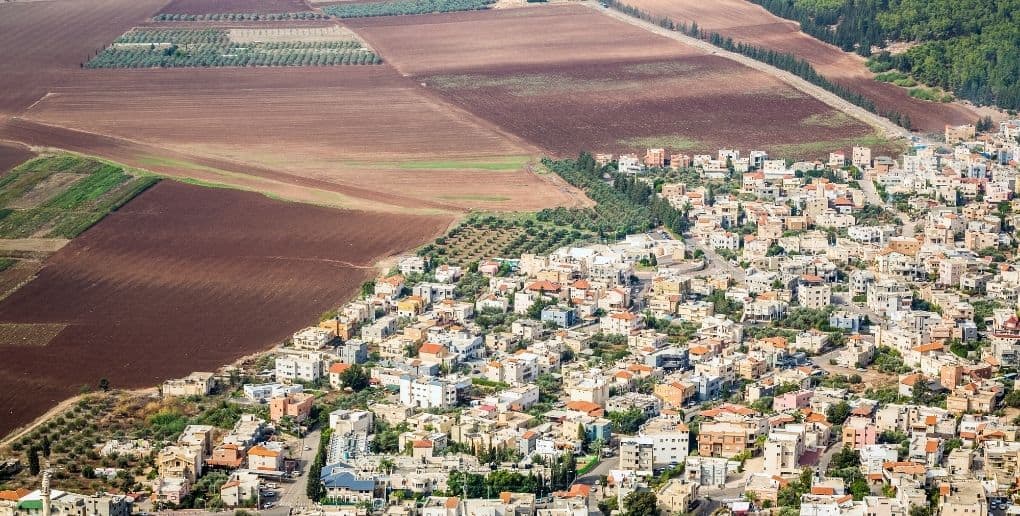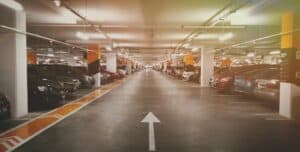
Mutualization: a future solution to save 20% of space in towns?
3 minutes of reading
in partnership with


To tackle the problem of urban sprawl, several initiatives are emerging in favour of a “shared town” in which buildings and urban spaces are mutualized for different uses. A rationale that could allow for saving space and inventing new ways of living together.

Between 1960 and 2015, France lost 25% of its agricultural land due to soil artificialization. This is because urban sprawl mainly occurs to the detriment of cultivatable land. A true paradox because, as the population increases, we need all our agricultural land to be able to feed everybody.
This is why the public authorities have decided to implement a so-called “Zero net artificialization” policy in order to contain this urban sprawl. We find a variety of practices among the levers that allow for reducing artificialization: limiting the construction of detached homes with gardens, building in gardens and even revitalising wasteland. The mutualization of spaces and buildings would also appear to be one of the main solutions for meeting this challenge.
Mutualization, is the “shared town” mentality, as defined recently by the Terra Nova think tank in its report entitled “Living in 20 years’ time”. Among the various scenarios, the idea of a shared town appears to be one of the most plausible. “It doesn’t mean sharing the town 100%, but we could share 20% of the spaces” specified Marc-Olivier Padis, Director of think tank studies.
However, the mutualization of housing is not a particularly new idea and has been the dream of architects and town planners for many a year. As of 1859, for example, the industrialist Jean-Baptiste André Godin built the “Familistère de Guise”, in the Aisne, to house his workers in buildings that included both private and common spaces. However, in latter years, the idea of mutualizing housing and buildings is becoming more and more established, especially thanks to changes in thinking and technology.

 Mutualizing spaces to optimize urban life
Beyond the mutualization of areas in housing, the current environmental issues are also pushing us to have the mutualization reflex in terms of town planning. The rationale? Optimizing the use of buildings to save space thanks to better organization of space and time.
This is the case, for example, for the Mab’Lab. In a mindset unique to third spaces – the perfect examples of the mutualization of urban spaces – the Mab’Lab uses the restaurant premises at the University of Crous Mabillon in Paris, outside of mealtimes, to serve as a co-working area for students and companies. It therefore represents a great example of what can be done to intensify the use of buildings
Another example has recently been inaugurated in Normandy, in the small town of Fresne-Camilly, where the town’s school has been given a new building that serves two purposes: on the one hand, it serves as the school canteen and on the other it’s a public library, with an area of 100 m², and is accessible to children during school time and after school, but also to the general public via an entrance outside the school.
Still in Paris, the former Adolphe Pinard maternity hospital will also benefit from this mentality during its renovation. It will thus host a nursery, schools and a gym, and some spaces, the internal courtyard or the sports equipment, will also be accessible to other users on weekends or during school holidays.
School playgrounds are also good examples of what can be done in terms of mutualizing spaces as we are now seeing playgrounds accessible to families and children on weekends, in order to offer a friendly and secure area where children can play during their free time. Another way, too, of opening the town up to children.
Mutualizing spaces to optimize urban life
Beyond the mutualization of areas in housing, the current environmental issues are also pushing us to have the mutualization reflex in terms of town planning. The rationale? Optimizing the use of buildings to save space thanks to better organization of space and time.
This is the case, for example, for the Mab’Lab. In a mindset unique to third spaces – the perfect examples of the mutualization of urban spaces – the Mab’Lab uses the restaurant premises at the University of Crous Mabillon in Paris, outside of mealtimes, to serve as a co-working area for students and companies. It therefore represents a great example of what can be done to intensify the use of buildings
Another example has recently been inaugurated in Normandy, in the small town of Fresne-Camilly, where the town’s school has been given a new building that serves two purposes: on the one hand, it serves as the school canteen and on the other it’s a public library, with an area of 100 m², and is accessible to children during school time and after school, but also to the general public via an entrance outside the school.
Still in Paris, the former Adolphe Pinard maternity hospital will also benefit from this mentality during its renovation. It will thus host a nursery, schools and a gym, and some spaces, the internal courtyard or the sports equipment, will also be accessible to other users on weekends or during school holidays.
School playgrounds are also good examples of what can be done in terms of mutualizing spaces as we are now seeing playgrounds accessible to families and children on weekends, in order to offer a friendly and secure area where children can play during their free time. Another way, too, of opening the town up to children.



Participatory housing and co-living
For several years, some shared spaces have been created in modern housing, especially shared gardens, and sometimes certain terraces. Examples that open the way to new experiments. In a building comprising 15 flats, do we really need 15 washing machines or 15 internet hubs, for example? Tomorrow, buildings could therefore be equipped with common terraces, a laundry accessible to all and even shared digital services, or certain rooms shared through reservation. In 2017, the French architect Eric Cassar proposed a building concept entitled “Habiter l’infini” [Live without limits], which he presented as “a building or block of buildings in which the area of the private sphere for each household is reduced to the profit of a wide variety of mutualized spaces” in which everyone would live in a flat for their primary requirements (eating and sleeping) and which would then offer the option of reserving other spaces for leisure activities: booking a room to host friends, a room for ad-hoc remote working or even a space on a terrace to read in the sunshine. An approach that we find in some housing today. In Bordeaux, for example, the Le Bon Pati complex has just been inaugurated, a participatory housing project comprising 12 flats that have several shared spaces: a garden, a large terrace, a large reception room and a guest bedroom. Beside participatory housing, which therefore allows residents of the same building to share spaces, we also find another trend: that of co-living or shared housing. A form of democratizing house sharing that is developing in particular in senior citizens seeking alternatives to care homes, and that is also winning over more and more young active urbanites. Unlike classic house shares, co-living offers truly individual spaces for the private sphere and provides an additional service-related brick to the housing. A rationale that we will find, for example, in Saint-Etienne, where the old local headquarters of the SNCF [French railways] will be partially reconverted into a co-living space by 2023. This building on 2,300 m² of wasteland will be split into two zones. Initially, apartments will be created for flat sharing. And over 700 m², 16 furnished apartments comprising a bedroom, bathroom, toilet and kitchenette will be associated with mutualized spaces; lounge, sports hall, spa, laundry, library, co-working area and terrace in order to offer an alternative housing experience.
Les cours d’école représentent des espaces à se réapproprier lors des week-end et vacances scolaires

A story of innovation
The mutualization of accommodation and urban spaces therefore allows for saving space in towns in order to prevent urban sprawl, but also to create new forms of solidarity and exchange. This new way of experiencing a sustainable town is also supported by the technological boom and benefits from innovations made by multiple startups. This is, for example, the case of the HomeExange platform that proposes its users exchange houses or flats for the duration of a holiday and represents an alternative to building holiday apartment complexes. We can also cite various startups in the field of mobility and especially those that are reinventing parking. In France, Zenpark, for example, is working with several constructors and landlords to offer a solution that allows for intelligently sharing and mutualizing the spaces in an underground car park in view of the observation that, in France, 5 million parking spaces are available in private parks, and are little or poorly used. Car sharing apps are also deployed within complexes so that residents of the same building can share vehicles, whether these are cars or bicycles.Obstacles to be removed?
But of course, in order to imagine and develop new real estate programmes that fully integrate this concept of sharing and mutualization, several obstacles must still be removed. A financial obstacle first of all, since developers need to prove that the concepts work and attract the public. However, proofs of concept have a not insignificant cost, with a share that is increased due to uncertainty about how the mutualized housing will be used by its inhabitants. There are also mutualization experiments, especially in social housing, that have proven that, while the first generation of inhabitants could benefit from support from the landlords, subsequent generations often received less support and the mutualized use could end up being lost, which leads to a loss of interest in the practice and the building. There is also a legal and regulatory obstacle, as the current regulations and standards relating to fire or access are not always adapted to these uses. Lastly, there is also a brake on use that will be linked to the organization of the community and to the resolution of possible conflicts. A subject that may, in the future, allow for reasserting the role of the caretaker, thanks to the management of new tasks unique to these shared spaces.
Eunicka Sopotnicka sur Getty Images
More reading
Read also




What lies ahead? 7 megatrends and their influence on construction, real estate and urban development
Article
20 minutes of reading

